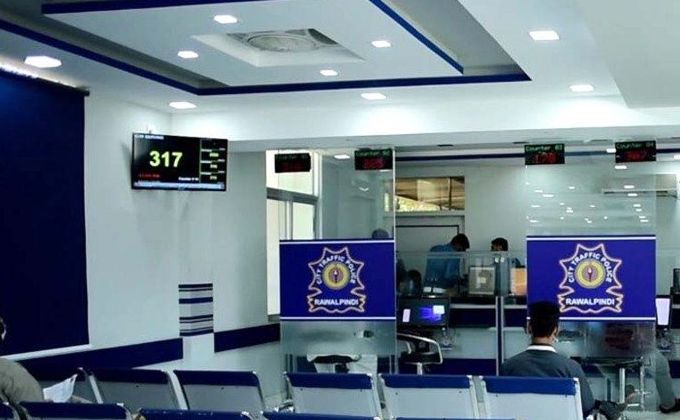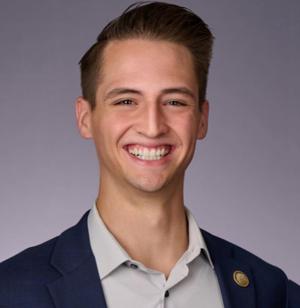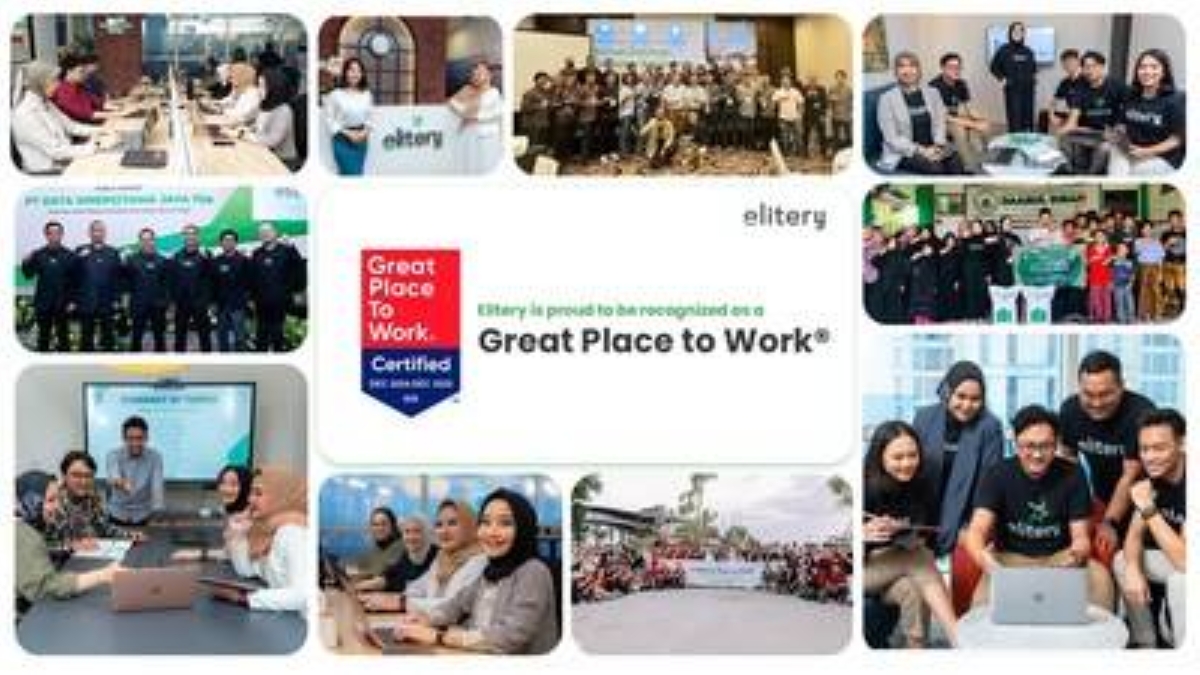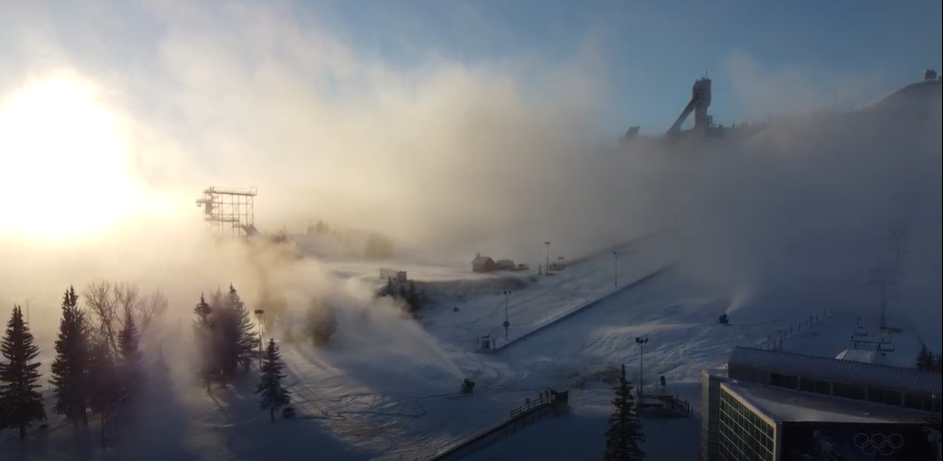casino crashers live youtube today
2025-01-13 2025 European Cup casino crashers live youtube today
News
WWE Survivor Series 2024 Live Updates: Plenty Of Action In StoreFeds consider additional Columbia River environmental guidelines amid political uncertainty
6 hot live casino
。
Cf industries exec Menzel sells $325,000 in stock
By RONALD BLUM AP Baseball Writer NEW YORK — New York Yankees outfielder Aaron Judge earned his second American League MVP award on Thursday. Judge was a unanimous pick for the first time, receiving all 30 first-place votes and 420 points in voting by the Baseball Writers’ Association of America. Kansas City shortstop Bobby Witt Jr. got all 30 second-place votes for 270 points, and Yankees outfielder Juan Soto was third with 21 third-place votes and 229 points. Dodgers star Shohei Ohtani won the National League MVP , his third MVP award, all of which have been unanimous. New York Mets shortstop Francisco Lindor was second with 263 points and Arizona second baseman Ketel Marte third with 229. Judge led the major leagues with 58 homers, 144 RBIs and 133 walks while hitting .322. Witt topped the big leagues with a .332 average, hitting 32 homers with 31 stolen bases and 109 RBIs. Soto batted .288 with 41 homers and 109 RBIs. When Judge won his first MVP award in 2022, he received 28 first-place votes while Ohtani got the other two. Judge had discussed the MVP award with Philadelphia’s Bryce Harper, the NL winner in 2015 and ’21. “I was telling him, ‘Man, I’m going to try to catch up to you with these MVPs here, man,’” Judge recalled. “He’d say, hopefully, he could stay a couple ahead of me, which I think he’ll do.” When Judge won his first MVP award in 2022, he received 28 first-place votes while Ohtani got the other two. He is the Yankees’ 22nd MVP winner, four more than any other team. Related Articles Judge was hitting .207 with six homers and 18 RBIs through April, then batted .352 with 52 homers and 126 RBIs in 127 games. “March and April were not my friend this year.” Judge said. “Just keep putting in the work and things are going to change. You can’t mope. You can’t feel sorry for yourself. Especially in New York, nobody’s going to feel sorry for you. So you just got to go out there and put up the numbers?” Balloting was conducted before the postseason.Emboldened 'manosphere' accelerates threats and demeaning language toward women after US electionwas not allowed to see the bones of the dead when I visited Jennifer Raff. They were fragments of teeth and skulls held in a small metal cabinet in the basement of Fraser Hall, the University of Kansas’ hub for anthropology research. The bones can be thousands of years old and belong to some of the earliest-known settlers of the Americas. Raff, who practices martial arts, has a strong athletic build and a bright, unguarded demeanor. As we walked through the anthropology department above the basement, I noticed skulls of hominids in glass cases along the walls. So why were the bones in the basement so vigilantly out of bounds? Raff told me that Native Americans typically regard the remains as sacred, belonging to their ancestors. Members of some tribes had granted Raff permission to study the genetic composition and origins of the bones. But she must do so discretely, keeping the remains hidden from visitors. Raff, an associate professor of anthropology at the university, specializes in paleogenomics, extracting genetic material from ancient remains. The DNA preserved inside the remains has the power to vindicate or undermine carefully laid out archaeological theories about migration patterns, how and when people first arrived, and to shed light on how these early settlers lived their lives. I can’t atone for the abuses of the past, but I can try to make the field better. For years, Raff has studied how humans first set foot in the Americas. Her 2022 book, by Dartmouth College paleoanthropologist for drawing together archaeology and Indigenous oral traditions “in a masterly retelling of the story of how and when people reached the Americas.” Raff admitted that she was not always sensitive to the provenance of the ancient remains she studies. When she was working on her Ph.D., she analyzed DNA from a first-century burial site in Illinois without the consent of local tribes. She used rib bones belonging to deceased women and children to extract DNA and study relatedness. It was perfectly legal to use the skeletons, which were kept at Indiana University, but she now regrets doing so. “In retrospect, I should have gone to tribes who claim descent from these populations, talked to them about the work, and gotten permission,” Raff said. “But at the time I thought, ‘Oh, it’s fine,’ so I just did it. That’s an attitude that I really push back against now with colleagues and other people in the field, thinking you can just do this work without permission or engagement with descendant communities. I really regard my earlier work as very unethical. I won’t go back and publish any of it.” Raff’s change of heart toward ancestral remains and artifacts represents a personal awakening for her. It also represents a generational shift in the practice of anthropology and archaeology. Raff’s mentor, Dennis O’Rourke, a professor of anthropology at the University of Kansas, said that in previous generations archaeologists rarely if ever consulted with Indigenous peoples. “There were no seeking permissions to do the work,” he said. “Most researchers relied on museums to provide permissions, and museums sometimes engaged in consultations and sometimes not.” As Raff and I arrived at her office, she said, “One of my missions as a scholar in this discipline is to try to improve it. I can’t atone for the abuses of the past, but I can try to make the field better in my way.” aff sat at her desk in her university office, pulling her dark hair into a ponytail behind her head. A framed photograph of Muhammad Ali boxing underwater in a swimming pool hung on a wall. A Rothko print in deep blues and reds hung on an opposite wall. Sitting on a bookshelf were prizes Raff has won for , one of them from the American Anthropological Association for the best science book in the field of biological anthropology. They were joined by mostly popular science and adventure books from authors she admires: by Gretel Ehrlich and by British geneticist , a friend and mentor. With the sun setting over the Kansas horizon, Raff told me it was a summer in the Arctic that shaped how she saw her own discipline. It was 2009 and she was a postgraduate, a geneticist invited to participate in the excavation of Nuvuk, an archaeological site located in Alaska’s northernmost point. Ocean storms continuously erode the coast there, pushing the frontier of the land southward. The area is home to the Iñupiat, who have lived there for more than 1,000 years. The dig that Raff joined was excavating the ancient cemetery at Nuvuk, which was rapidly eroding into the water, taking away with it the cultural and physical remains of the paleo-Inuit who were most undoubtedly related to the present-day inhabitants of Utqiaġvik. The Arctic landscapes left an indelible impression—the starkness of the open plains, the punishing swarms of insects, the winteriness even on the warmest days. “It’s a remarkable environment,” Raff said. The people whose genes Raff studies had survived this and harsher environments for at least a millennium. “I could really appreciate the innovations that kept them alive,” she said. The scientists had sought permission to sequence the DNA preserved inside the remains unearthed at the cemetery through consultations with the Iñupiat of Utqiaġvik. The community had agreed, provided certain provisions—minimal physical damage to the excavated bodies, followed by prompt reburial. “It was liberating,” Raff said. “To work within an explicitly stated framework, composed by the descendants of the peoples I was hoping to learn from, made it easy to do our scientific research on their terms.” Since the 1800s, anthropology museums have stocked their collections with Native American artifacts and remains sacred to tribes. “Native peoples were essentially powerless to stop it,” said Chip Colwell, editor-in-chief of , an anthropology magazine, and formerly a senior curator at the Denver Museum of Nature and Science. “When I was coming up in the field in the ’90s, it was extraordinarily rare for Native peoples’ concerns, insights, practices, and religions to be considered as a part of archaeology.” Human history belongs to all humankind, the rationale went, elevating archaeology and anthropology to the prerogative of enlightening all humanity. From that vantage point, the needs and views of a relatively small group, such as the Native Americans, seemed trifling, especially if they insisted on the reburial of discovered bones and artifacts. Reburial, rather than preservation of archaeological finds in museums, was seen as anti-science, prohibiting future investigations which might shed new light on history. In 1971, a burial ground was discovered in Glenwood, Iowa. Twenty-six individuals identified as white “European-American pioneers” were reburied in a nearby cemetery. The remains of a Native American woman and her child from the same burial site were shipped to the Office of the State Archaeologist in Iowa City, to be distributed to museums or universities. “Dead Native Americans were archaeological resources for the state and white people weren’t,” Colwell explained. “We had allowed Native peoples to become the subject of science in a way we hadn’t for other people.” The Glenwood incident sparked a movement to defend Native American rights, challenging archaeological standard practice. In 1990, on the heels of the Civil Rights movement, the Native American Graves Protection and Repatriation Act (NAGPRA) was enacted into law. It gave Indigenous people the right to rebury their dead, provided they could make a tenable connection between ancient remains and tribal affiliation. Under NAGPRA, affiliation can be established via land ownership, so that remains discovered on federal or tribal land are recognized as belonging to the tribes themselves. At the time, Colwell said, passage of NAGPRA caused an uproar. “Some scholars equated reburial to book burning or destroying libraries of knowledge.” Gradually, the culture among archaeologists began to shift, thanks largely to Indigenous activism. “That began to really push archaeologists to confront the ways in which their discipline was perpetrating harm,” Colwell said. He estimates that 90 percent of anthropologists and archaeologists today are on board with the law. Raff said meeting tribal members and learning about their cultures from them is a boon to science. Scientists can’t approach research questions, such as when humans first arrived in the Americas “with just one discipline’s data and methods alone. You have to let multiple truths or multiple possibilities coexist at the same time.” aff’s comfort with ambiguity deeply informs her work. Her central thesis in runs contrary to the anthropology that has long been taught in classrooms, a tidy story of how the first people arrived on the American continent in a single wave of migration from Asia some 15,000 years ago. Raff patiently unwinds this expectation, explaining how multiple disciplines and ways of knowing have, over the past two decades, converged on a richer, but muddier narrative of when humans first set foot in the Americas. The tidy Clovis-first theory held that people who settled the continent about 15,000 years ago were supported by a novel technology—a special kind of sharp spearhead (a Clovis head) that allowed them to hunt and subsist on megafauna. It was assumed that the “last glacial maximum,” an ice age that lasted for 4,000 years (between 23,000 to 19,000 years ago), covered the land in deep, year-round ice sheets that prohibited settlers before then. But studies of DNA from the oldest human remains unearthed in the Americas, as well as sequenced genomes of present-day Indigenous people, show that Native Americans are descendent from a single population, dating to somewhere between 25,000 to 20,000 years ago. This suggests there was a —a hospitable nook where these ancestors survived—far from other human tribes roaming the plains of Asia over the same period. Raff’s thesis about the first Americans runs contrary to the tidy story taught in classrooms. There have been no confirmed human settlements that date to this time, although Raff believes the best place to look is underwater, not far from where she conducted her research in Nuvuk. Scientists know that during the last Ice Age, Asia was connected to North America by a land bridge across the Bering Strait, which may have had a climate mild enough to allow populations to flourish. The genetic signatures also show a distinct spread of different tribes—a branching sometime between about 22,000 and 18,000 years ago. One branch, the Ancient Beringians, has no known living descendants. The other, known as the Ancestral Native Americans, gave rise to populations south of the Laurentide ice sheet, which cloaked the north of the continent, along a line roughly connecting present-day Seattle with New York City. The Ancestral Native Americans spread quickly across the whole continent, with many populations splitting extremely rapidly from one another. In , Raff explains how this has long baffled archaeologists because it is not consistent with a slow overland advancement of hunger-gatherer populations. A hypothesis proposed by Canadian archaeologist Knut Fladmark in 1979 has gained significant traction in recent years due to the pairing of ancient DNA work and Indigenous knowledge. Fladmark argued that people could have migrated along a coastal route rather than an ice-free corridor inland. Further research by scholars, notably Jon Erlandson of the University of Oregon, has led to the theory that humans could have lived along the coast eating kelp, fish, shellfish, and marine mammals, traveling to new sites by boat, via a “ ,” which ran north to south along the west coast of North America, a route that could account for the rapid spread of communities. This idea lacks concrete archaeological evidence—no physical artifacts related to navigation have been found—but is supported by oral traditions of the Tlingit and Haida tribes of Alaska, “who maintain that their ancestors were a seafaring people who have lived in this region since the dawn of history,” Raff writes in . The oral traditions of the Tlingit are rich in narratives of ancestors traveling along the Pacific Northwest Coast and down the Stikine River, over and below glaciers, foraging for seals and other marine mammals. In 2007, a genetic reconstruction of the genome of Shuká Káa, a man whose skeleton was found in an Alaskan cave and was dated to 10,000 years ago, added credibility to the kelp highway theory. It showed that Shuká Káa’s people were the ancestors of the Tlingit. At the same time, chemical analysis of his teeth showed that Shuká Káa had indeed grown up on a diet of seafood. Other archaeological artifacts found alongside his body in the cave suggested that he had engaged in long-distance trade for high quality stone, further support the coastal highway theory. The genetic sequencing work was done in consultation with the Tlingit tribe, and after the work was completed, Shuká Káa was buried in 2008. Raff reminds her readers that not all Native American origin stories align neatly with the results of genetics. And that genetic results are not set in stone, as new techniques overturn initial interpretations. In the closing pages of , Raff calls it hubris to think a definitive history of the peopling of the Americas is possible. aff ventured into writing for the public in 2015 when she created a blog called . The name, suggested by a publicist friend, reflected her feisty feelings at the time. “I wanted to go after pseudoscience and the anti-vaccine stuff that really made me mad,” she said. One post about misinformation about measles’ vaccinations begins, “Dear parents, you are being lied to.” “I learned the things that went viral were the ones that I was writing passionately about,” Raff said. “When I had a real connection, emotional connection to a topic, I wrote the best.” Raff’s blogging landed her in the culture wars, where she became a target for those who saw her as an embodiment of political correctness over objective science. In particular, Raff has been in the crosshairs of Elizabeth Weiss. Weiss is a professor emeritus of anthropology at San Jose State University and the coauthor with James W. Springer of . Weiss and Springer criticize NAGPRA and the reburial of human remains in ancestral burial grounds. They argue “secular and scientific scholarship concerning human and biological differences” is being suppressed and censored by deference to Native American religious myths. I don’t want to be this white savior liberal girl running around. In of Origin in the online magazine Quillette, Weiss aimed that criticism at Raff. “To defer to Indigenous creationist ideas is no different, in principle, from deferring to religious Christian attitudes,” Weiss wrote. As “an anthropologist, I find the anti-scientific trend that the book represents to be deeply unsettling.” In response, Raff said, “Being respectful of the beliefs and priorities of Indigenous peoples is not in opposition to science, and I’ve never been asked by any tribe to change the results of our research to fit an agenda. Weiss is stereotyping Native Americans as anti-science, which is ludicrous; they are as varied in their perspectives and belief systems as all people are.” Raff was born Jennifer Anne Kedzie in Carbondale, Illinois, the first daughter of three. Her youngest sister died in infancy of spinal muscular atrophy, a rare genetic disorder for which there was no cure in the early 1980s. Raff was four. After the loss of her daughter, Raff’s mother was moved to return to higher education and neuroscience, and the family lived in university towns in Missouri and Indiana. Raff’s parents divorced amid the moves and financial struggles, but Raff stayed close with both her parents. Raff’s father worked as a quality assurance engineer in industry, and she credits him for pushing her to look for answers and research. “Every time I would ask him a question, he would be like, ‘Look it up.’” On the campus of Indiana University where she lived as a student, Raff grew close to Elizabeth and Rudolf Raff, both biology professors. Rudolf Raff was a pioneer of evolutionary developmental biology and director of the Indiana Molecular Biology Institute. Their son, Aaron, was Jennifer’s boyfriend, and Aaron and Jennifer married while she was in college but divorced during her last year of graduate school. “It was horrible, a really hard time,” Raff said. “But I got through it. I focused on martial arts and fighting. I thought, ‘This could be a life for me.’” And then I thought, ‘No, you know what? I love science more.’” She kept Raff as her surname. Raff has never lived outside the inland heart of the country—Illinois, Indiana, Utah, Texas, and now Kansas. Raff’s home is decorated with objects embedded with personal meaning—sepia photographs of her family, traditional weapons used in martial arts, and a handful of paintings. “Low Tide,” a peaceful landscape work by the Native American artist Linda Infante Lyons, hangs above the dining room table. It is also on the cover of . A violent depiction of abolitionist John Brown leading a bloody uprising against enslavers in 1865 hangs in the living room. In the time I spent with Raff, there was only one instance I saw her look incredibly uncomfortable. It came during a dinner at her home with her husband, Colin McRoberts, a lawyer and negotiations consultant; their son, Oliver; her mother, Kathy; and a friend of Raff’s, Peter Koenig. As we discussed the success of and Raff’s advocacy for the inclusions of Native Americans’ own stories in archaeology, Koenig remarked, “It took a white girl for Americans to hear the story.” Raff buried her head in her hands and hoodie. “I don’t want to be this white savior liberal girl running around,” Raff told me later. “I think I have a platform. I don’t know if it’s because I’m white, because I’m a professor, because I’ve been writing for the public for a long time. I don’t know. It might be all these things.” In the spring of 2024, Raff received a Guggenheim Fellowship to complete her second book, “It will continue my focus on challenging pernicious concepts of biological race and colonialist practices—particularly those still prevalent in paleoanthropology and paleogenomics,” Raff said. It will continue her quest to “complicate” the picture of human origins, so the public can begin to see the complex narratives of belonging. Where an origin is not a single point on a distant horizon, but a forest of interwoven roots. Posted on Elena Kazamia is a science writer from Greece. She has a master’s degree in conservation from University College London and a Ph.D. in plant sciences from the University of Cambridge in the U.K. Cutting-edge science, unraveled by the very brightest living thinkers.
INDIANAPOLIS (AP) — There's more than just school pride and bragging rights to all that bellyaching over who might be in and who might be out of college football 's first 12-team playoff. Try the more than $115 million that will be spread across the conferences at the end of the season, all depending on who gets in and which teams go the farthest. According to the College Football Playoff website , the 12 teams simply making the bracket earn their conferences $4 million each. Another $4 million goes to conferences whose teams get into the quarterfinals. Then, there's $6 million more for teams that make the semifinals and another $6 million for those who play for the title. Most of this bonanza comes courtesy of ESPN, which is forking over $1.3 billion a year to televise the new postseason. A lot of that money is already earmarked — more goes to the Big Ten and Southeastern Conference than the Big 12 or Atlantic Coast — but a lot is up for grabs in the 11 games that will play out between the opening round on Dec. 20 and the final on Jan. 20. In all, the teams that make the title game will bring $20 million to their conferences, all of which distribute that money, along with billions in TV revenue and other sources, in different ways. In fiscal 2022-23, the Big Ten, for instance, reported revenue of nearly $880 million and distributed about $60.5 million to most of its members. The massive stakes might help explain the unabashed lobbying coming from some corners of the football world, as the tension grows in advance of Sunday's final rankings, which will set the bracket. Earlier this week, Big 12 commissioner Brett Yormark lit into the selection committee, which doesn't have a single team higher than 15 in the rankings. That does two things: It positions the Big 12 as a one-bid league, and also threatens to makes its champion — either Arizona State or Iowa State — the fifth-best among conference titlists that get automatic bids. Only the top four of those get byes, which could cost the Big 12 a spot in the quarterfinals — or $4 million. “The committee continues to show time and time again that they are paying attention to logos versus resumes,” Yormark said this week, while slamming the idea of teams with two losses in his conference being ranked worse than teams with three in the SEC. The ACC is also staring at a one-bid season with only No. 8 SMU inside the cut line of this week's projected bracket. Miami's loss last week all but bumped the Hurricanes out of the playoffs, a snub that ACC commissioner Jim Phillips said left him “incredibly shocked and disappointed." “As we look ahead to the final rankings, we hope the committee will reconsider and put a deserving Miami in the field," Phillips said in a statement. The lobbying and bickering filters down to the campuses that feel the impact. And, of course, to social media. One of the most entertaining episodes came earlier this week when athletic directors at Iowa State and SMU went back and forth about whose team was more deserving. There are a few stray millions that the selection committee cannot really influence, including a $3 million payment to conferences that make the playoff. In a reminder that all these kids are going to school, after all, the conferences get $300,000 per football team that meets academic requirements to participate in the postseason. (That's basically everyone). Get poll alerts and updates on the AP Top 25 throughout the season. Sign up here . AP college football: https://apnews.com/hub/ap-top-25-college-football-poll and https://apnews.com/hub/college-footballIf a taxpayer is facing any issues or difficulty in comprehending any issue with his/her income tax return (ITR) or TDS certificate or any other income tax related issues, then they have an option to lodge a complaint with the tax department. This complaint is lodged through the grievance redressal mechanism. However, considering the fact that the number of grievances is very high, and they vary in nature, not all income tax officers might be well equipped to solve all types of grievances. For example: For example: A centralised processing centre (CPC) officer can't handle grievances related to tax demand or section 220 notices, because an assessing officer (AO) commissioner of income tax as the case may handle this. To give taxpayers clarity about which officer to approach or which department head to send the grievance complaint, the income tax department released a document in the last week of November 2024. This document highlights which income tax officers can handle which type of grievances and gives you clarity about whom to approach. Experts say knowing this information ensures a faster resolution of grievances. Which tax officer can help you solve what type of grievances This document by the income tax department clarifies the right process of filing complaints with the correct officer, such as submitting TDS-related grievances or issues related to Form 26AS to CPC(TDS) rather than the Assessing Officer, etc. "This eliminates confusion, reduces the likelihood of misfiling, and ensures a faster resolution of grievances," says Chartered Accountant Rahul Singh,Senior Manager, Advisory & Research, Taxmann. According to the document by income tax department here's a chart explaining the level of problem-solving ability of tax officers: Entrepreneurship Crafting a Powerful Startup Value Proposition By - Dr. Anu Khanchandani, Startup Coach with more than 25 years of experience View Program Office Productivity Mastering Google Sheets: Unleash the Power of Excel and Advance Analysis By - Metla Sudha Sekhar, IT Specialist and Developer View Program Artificial Intelligence(AI) Learn InVideo AI: Create Videos from Text Easily By - Prince Patni, Software Developer (BI, Data Science) View Program Finance AI and Generative AI for Finance By - Hariom Tatsat, Vice President- Quantitative Analytics at Barclays View Program Data Science SQL Server Bootcamp 2024: Transform from Beginner to Pro By - Metla Sudha Sekhar, IT Specialist and Developer View Program Finance A2Z Of Finance: Finance Beginner Course By - elearnmarkets, Financial Education by StockEdge View Program Artificial Intelligence(AI) Master in Python Language Quickly Using the ChatGPT Open AI By - Metla Sudha Sekhar, IT Specialist and Developer View Program Strategy ESG and Business Sustainability Strategy By - Vipul Arora, Partner, ESG & Climate Solutions at Sattva Consulting Author I Speaker I Thought Leader View Program Finance Tally Prime & GST Accounting: Complete Guide By - CA Raj K Agrawal, Chartered Accountant View Program Marketing Digital Marketing Masterclass by Neil Patel By - Neil Patel, Co-Founder and Author at Neil Patel Digital Digital Marketing Guru View Program Artificial Intelligence(AI) Tabnine AI Masterclass: Optimize Your Coding Efficiency By - Metla Sudha Sekhar, IT Specialist and Developer View Program Entrepreneurship Boosting Startup Revenue with 6 AI-Powered Sales Automation Techniques By - Dr. Anu Khanchandani, Startup Coach with more than 25 years of experience View Program Artificial Intelligence(AI) Basics of Generative AI: Unveiling Tomorrow's Innovations By - Metla Sudha Sekhar, IT Specialist and Developer View Program Entrepreneurship Building Your Winning Startup Team: Key Strategies for Success By - Dr. Anu Khanchandani, Startup Coach with more than 25 years of experience View Program Entrepreneurship Validating Your Startup Idea: Steps to Ensure Market Fit By - Dr. Anu Khanchandani, Startup Coach with more than 25 years of experience View Program Finance A2Z Of Money By - elearnmarkets, Financial Education by StockEdge View Program Web Development Intermediate C++ Skills: Master Pointers, Structures and File Stream By - Metla Sudha Sekhar, IT Specialist and Developer View Program Web Development C++ Fundamentals for Absolute Beginners By - Metla Sudha Sekhar, IT Specialist and Developer View Program Artificial Intelligence(AI) Java Programming with ChatGPT: Learn using Generative AI By - Metla Sudha Sekhar, IT Specialist and Developer View Program Office Productivity Microsoft Word Mastery: From Beginner to Expert By - CA Raj K Agrawal, Chartered Accountant View Program Office Productivity Mastering Microsoft Office: Word, Excel, PowerPoint, and 365 By - Metla Sudha Sekhar, IT Specialist and Developer View Program Web Development Mastering Full Stack Development: From Frontend to Backend Excellence By - Metla Sudha Sekhar, IT Specialist and Developer View Program Marketing Future of Marketing & Branding Masterclass By - Dr. David Aaker, Professor Emeritus at the Haas School of Business, UC Berkeley, Author | Speaker | Thought Leader | Branding Consultant View Program Entrepreneurship Startup Fundraising: Essential Tactics for Securing Capital By - Dr. Anu Khanchandani, Startup Coach with more than 25 years of experience View Program Web Development Advanced C++ Mastery: OOPs and Template Techniques By - Metla Sudha Sekhar, IT Specialist and Developer View Program Serial number Competent Authority Particulars 1 E-filing This department handles e-filing of income tax returns, statutory forms, and services like e-verification and e-proceedings. Grievances related to portal registration, profile issues, password, ITR/Form verification, e-proceedings, Instant PAN via Aadhaar, or income tax related cybercrime should be lodged here. 2 Assessing Officer (AO) Assessing Officers (AOs) handle taxpayer assessments and ITR queries. Lodge grievances related to refunds, rectifications, demand corrections, appeal orders, PAN applications, or other pending matters with this department. 3 CPC (TDS) This relates to the e-TDS scheme. Lodge grievances about portal access, TDS statement processing, defaults, Challan/BIN corrections, Form 26AS, Form 16/27D, TDS refunds, and TDS on property sales here. 4 CPC (ITR) It handles Income Tax Returns processing. Grievances related to ITR-V status, intimations or notices under section 139 (9) or 143(1), unreceived refunds, tax processing issues, social media complaints or feedback should be lodged here. 5 DIT (Systems) It manages IT systems for the Income Tax Department. Log grievances about technical issues with the e-filing website, PAN, tax payment system (OLTAS), refund banker (SBI) escalations, and assessment mismatches here. 6 National Securities Depository Limited (NSDL) It handles all PAN-related issues, such as Aadhaar linking, duplicate PANs, digitalization errors,discrepancy letters, application problems, delivery issues, rejection and upload delays. 7 Unique Identification Authority of India Infrastructure Technology Services Limited (UTIITSL) This, with NSDL, handles PAN-related issues like Aadhaar linking, duplicate allocations, digitization errors, discrepancy letters, application problems, delivery issues, and rejections. Source: Income Tax Department A different circular released on November 4, 2024, by the income tax department had information on amended monetary limits and powers of tax officers in respect of waiver of interest paid or payable under section 220 of the Income Tax Act. In this circular the tax department has mentioned which tax officer has the authority to waive this interest. Aniket Kulkarni, Chartered Accountant says, "The clear specification of authorities' vis-a-vis monetary limits for reduction or waiver of interest aim to provide clarity to taxpayers. The taxpayer now has a clear understanding of whom to approach with an application for reduction or waiver of interest." Income Tax Circular Source: Income Tax Department circular "While the conditions for grating reduction or waiver of interest were already existing in the provision, division of responsibilities to different categories of officers is expected to fasten the process of disposal of applications. However, subjectivity in applying conditions like what constitutes genuine hardship may differ from authority to authority," says Kulkarni. Here's what else has changed in respect to grievance redressal in 2024 Chartered Accountant (Dr.) Suresh Surana says many changes were made in respect to the grievance redressal mechanism of Income Tax. "The Income Tax Department of India has introduced several enhancements to its grievance redress mechanism in 2024, aimed at improving taxpayer experience and ensuring efficient resolution of issues. With the launch of the e-Nivaran and CPGRAMS system, taxpayers now have a more efficient way to address their concerns, track progress, and escalate unresolved issues as needed," says Surana. According to Surana, here's a summary of what's changed and new in the grievance redressal process: Unified Grievance Management System - e-Nivaran and Centralised Public Grievance Redress and Monitoring System (CPGRAMS) The Income Tax Department has established a Unified Grievance Management system called e-Nivaran and CPGRAMS to address taxpayers' issues more effectively. E-Nivaran allows you to submit grievances online related to various income tax matters, including filing issues, refunds, and processing delays whereas CPGRAMS allows you to lodge grievances to the public authorities on any subject related to service delivery. E-Nivaran - Submission Process Two Submission Methods: Taxpayers can submit grievances through two primary methods: Registered Users: Individuals with registration on the e-filing portal can log in and submit grievances directly through their accounts. Unregistered Users: Even individuals without registration can file grievances by accessing the grievance section on the Income Tax portal. Income Tax Grievance Resolution Timeline The Income Tax Department aims to resolve grievances within 8 weeks from the date of receipt of the grievance. "However, many grievances are typically addressed within one month," says Surana. For urgent matters originating from high-level offices (like the Prime Minister's or Finance Minister's Office), resolutions are stated to be prioritised with a turnaround time of 21 days. Income Tax Grievance Status Tracking Taxpayers can easily track the status of their submitted grievances through the e-Nivaran system. This feature enhances transparency and allows taxpayers to stay informed about the progress of their complaints. Income Tax Grievance Escalation Mechanism If a grievance is not resolved satisfactorily, you have the option to escalate the complaints through the e-Nivaran platform. This escalation process is designed to ensure that unresolved issues receive further attention from higher authorities of the Income Tax Department. Surana says: "The E-Nivaran scheme enables taxpayers to submit grievances online and receive a Unique Grievance ID for tracking their cases. This digital approach reduces administrative delays and paperwork. Taxpayers receive automated acknowledgments and updates regarding their grievances. This ensures they are informed about the status of their complaints without needing to follow up repeatedly. The grievance redressal mechanisms are now standardised across departments, which helps in maintaining consistency in how complaints are handled. It is important to highlight that the document by the Income Tax Department (table shown above) provides comprehensive information on the appropriate authority to which grievances should be reported, depending on the specific nature of the issue. This ensures that individuals can effectively direct their concerns to the relevant body equipped to handle their particular type of grievance, facilitating a more efficient resolution process."
AwaLife unveils Portable as brand ambassadorYankees’ Aaron Judge wins 2nd AL MVP award
Lynne Roberts wasn't looking to leave as Utah women's basketball coach. Then she got a call from LANone
Botafogo remarkably overcame a red card shown to midfielder Gregore inside 30 seconds to beat Atlético Mineiro and win the Copa Libertadores final. Artur Jorge's side faced their fellow Brazilian outfit in Saturday's final, which was held at the Estadio Mâs Monumental in Buenos Aires. Former Manchester United star Alex Telles added to goals from Luiz Henrique and Junior Santos to win the game for Botafogo. It is the first time they have ever won the Copa Libertadores, South America's version of the Champions League . They had to do it the hard way though after Gregore was sent off within the opening minute. The incident that saw him fall foul of Facundo Figueroa came after one of Botafogo's defenders attempted to clear the ball forward. He only reached the halfway line though, with Gregore attempting to bring the ball under control. But he did so with his studs raised up, which meant he caught Mineiro star Fausto Vera on the top of the head. Vera was left sprawled on the ground and the game was paused for several minutes while he was treated. While Vera was attended to by medics, Figueroa had reached into his pocket and shown a red to Gregore. While the midfielder had motioned his hand in a 'calm down' gesture after the tackle, Chelsea icon Pat Nevin insisted it was the right decision. "Wow. I'm immediately thinking there are certain referees that will be reaching for the red for that. It's the Copa Libertadores final, you suspect a yellow but if he goes for a red you will not be shocked," he said in commentary on BBC Sport. "The players are whipped up, I get that. Less than a minute in, so whipped up. The thing is you do worry about players being injured. Look, he's going off, but you're talking about someone who's got a head injury. "A player who rolls about, you don't worry so much about. He's hasn't moved and that's a horrible kick there. The fact he looked up just after it is something. But that is a red with bells on it. "I mean I do understand to some degree, you're so whipped up and excited about it but that. There will be an argument that the head was down, but there is a duty of care, when yu're studs up down. A full speed it's a horrible looking one." Gregore did eventually head off the pitch, with Vera remarkably able to carry on until he was subbed off at half-time. By that stage, Mineiro were already two goals down after Henrique's opener and Telles' penalty. Eduardo Vargas halved the deficit two minutes into the second-half, but Mineiro were successfully held off thereafter. Santos then made sure of the win seven minutes into added time to make it a famous day for Botafogo. Join our new WhatsApp community and receive your daily dose of Mirror Football content. We also treat our community members to special offers, promotions, and adverts from us and our partners. If you don't like our community, you can check out any time you like. If you're curious, you can read our Privacy Notice. Sky has slashed the price of its Sky Sports, Sky Stream, Sky TV and Netflix bundle in an unbeatable new deal that saves £240 and includes 1,400 live matches across the Premier League, EFL and more.One of the most hyped PLE of 2024, WWE Survivor Series WarGames 2024, will take place on December 1 and will be held at Rogers Arena in British Columbia, Canada, starting at 04:30 AM Indian Standard Time (IST). For Survivor Series WarGames 2024 in India, Sony Sports Network are the official broadcaster of the PLE, which will provide live telecast viewing option on their Sony Sports Network channels. For live streaming viewing options fans can switch over to the Sony LIV app and Website. WWE Survivor Series WarGames 2024 Surprises: Check Out Possible Betrayals and Returns Featuring Brock Lesnar, Goldberg in High Octane Matches at PLE . OG Bloodline or New Bloodline - which side are you on? ⚔️ 👀 Find out what happens, at #SurvivorSeries #WarGames on Dec 1, 4:30 AM onwards on #SonySportsNetwork 🔥 #WWE #WWEIndia #Bloodline pic.twitter.com/mhbFqFmW8p — Sony Sports Network (@SonySportsNetwk) November 27, 2024 (SocialLY brings you all the latest breaking news, viral trends and information from social media world, including Twitter, Instagram and Youtube. The above post is embeded directly from the user's social media account and LatestLY Staff may not have modified or edited the content body. The views and facts appearing in the social media post do not reflect the opinions of LatestLY, also LatestLY does not assume any responsibility or liability for the same.)The price of bitcoin soared past the long-awaited $100,000 benchmark for the first time ever late Wednesday evening. By Thursday afternoon, the flagship cryptocurrency pulled back from the milestone. It was recently higher by 0.28% at $99,140.00, according to Coin Metrics, trading at the lows of Thursday’s trading following some profit taking by investors. On Wednesday night, it rose as high as $103,844.05. The move came after President-elect Donald Trump announced plans to nominate Paul Atkins as chair of the Securities and Exchange Commission. The appointment could fulfill Trump’s most important campaign promise to the crypto industry: to replace Gary Gensler, who has become something of a villain in crypto for the agency’s regulation-by-enforcement approach to the industry under his leadership. Trump congratulated bitcoiners in a Truth Social post Thursday morning, saying “you’re welcome” for his part in helping send bitcoin to $100,000 and that “together, we will make America great again.” It’s a day of celebration for longtime bitcoin investors, who have held on for dear life, or “HODL’d” through several of the cryptocurrency’s boom-and-bust cycles, during which government and financial institutions remained dismissive — and even hostile — toward the asset class. That’s largely because of the cryptocurrency’s anti-establishment roots. The original idea for bitcoin was proposed at the height of the 2008 financial crisis: a “peer-to-peer version of electronic cash would allow online payments to be sent directly from one party to another without going through a financial institution,” its founder, Satoshi Nakamoto, wrote in the Bitcoin Whitepaper . In recent years, however, the industry has demonstrated the value of bitcoin to much of the institutional investing world. BlackRock , Fidelity, Invesco and others launched the first spot bitcoin ETFs at the beginning of this year — bitcoin’s “IPO” moment — and the growing demand for them by institutions has helped drive the price higher. In November, Rick Wurster, the incoming CEO of Charles Schwab , said the firm is preparing to enter spot crypto trading , pending regulatory changes expected in the next Trump administration. On Wednesday, Federal Reserve Chair Jerome Powell said bitcoin is “just like gold, only it’s virtual, it’s digital,” speaking at the DealBook conference . He further clarified that “people are not using it as a form of payment, or as a store of value” and that “it’s not a competitor for the dollar, it’s really a competitor for gold.” “We’re witnessing a paradigm shift. After four years of political purgatory, bitcoin and the entire digital asset ecosystem are on the brink of entering the financial mainstream,” Mike Novogratz, CEO of Galaxy Digital, told CNBC. Bitcoin had been widely expected to reach the landmark $100,000 level since the U.S. presidential election. However, excited investors sent bitcoin closer to this mark much sooner than initially anticipated; it rose as high as $99,849.99 on Nov. 22. There is much hope that Trump will deliver on several pro-crypto initiatives in the year ahead — including the establishment of a national strategic bitcoin reserve or stockpile, no taxes on crypto transactions and opening up the crypto public equity markets with more IPOs. “Over the long term, I’m bullish,” Novogratz added. “It won’t be a straight line up, and investors should always consider taking gains off the table. But, with a pro-crypto administration about to take charge in the U.S., it’ll be hard for the rest of the world not to take notice.” Bitcoin is now up more than 133% in 2024 and 42% since the election.
A fire that gutted a home at Culcairn on Wednesday night does not appear to be suspicious, investigators say. or signup to continue reading Fire crews were called to the burning house on the Olympic Highway, near Cummings Road, about 11.20pm on Wednesday, December 4. The house, south of the Culcairn township, was well alight when firefighters arrived at the scene. One occupant had evacuated uninjured. The house was gutted and the roof partially collapsed. Crews from Fire and Rescue NSW and the Rural Fire Service remained at the scene into Thursday morning. Investigators returned later in the day and examined the burnt out house. Early indications are that the fire is not suspicious. The blaze followed The Garoogong Road property was gutted by a fire sparked about 12.05am. Troy Newton, , was one of two men who rushed to the burning building to check if anyone was inside. There were no reported injuries during that blaze. DAILY Today's top stories curated by our news team. WEEKDAYS Grab a quick bite of today's latest news from around the region and the nation. WEEKLY The latest news, results & expert analysis. WEEKDAYS Catch up on the news of the day and unwind with great reading for your evening. WEEKLY Get the editor's insights: what's happening & why it matters. WEEKLY Love footy? We've got all the action covered. WEEKLY Every Saturday and Tuesday, explore destinations deals, tips & travel writing to transport you around the globe. WEEKLY Going out or staying in? Find out what's on. WEEKDAYS Sharp. Close to the ground. Digging deep. Your weekday morning newsletter on national affairs, politics and more. TWICE WEEKLY Your essential national news digest: all the big issues on Wednesday and great reading every Saturday. WEEKLY Get news, reviews and expert insights every Thursday from CarExpert, ACM's exclusive motoring partner. TWICE WEEKLY Get real, Australia! Let the ACM network's editors and journalists bring you news and views from all over. AS IT HAPPENS Be the first to know when news breaks. DAILY Your digital replica of Today's Paper. Ready to read from 5am! DAILY Test your skills with interactive crosswords, sudoku & trivia. Fresh daily! Advertisement Advertisement
AI Model Risk Management Global Market Report 2024: Key Insights, Market Size, Growth Rates and Industry Trends
Obama speaks to young leaders as some Democrats push to pass the torch
 angel casino live
angel casino live














1736124892-0/image-(1)1736124892-0.jpg)
 online casino live dealer
online casino live dealer





 rachel casino live
rachel casino live














 90 jili live casino login
90 jili live casino login




